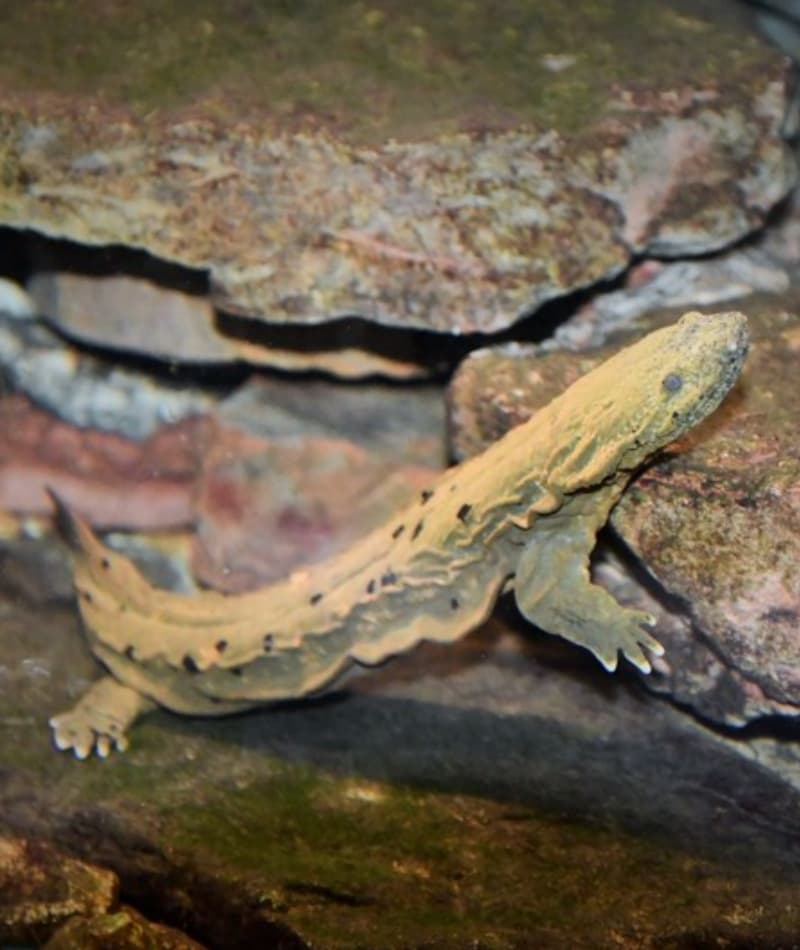
Eastern Hellbender
Cryptobranchus alleganiensis alleganiensis
Did you know?
- Eastern hellbenders are also known as a “snot otters."
- Hellbenders are made for life in the water. They usually do not swim, but they walk on the bottom of streams.
- Their diet is 90% crayfish.
- They hunt at night, so they depend on smell and touch to find their prey.
- Except for the breeding season, hellbenders are solitary.
Giant Salamander
Measuring about two feet in length, the hellbender is one of the largest species of salamanders in the world. The hellbender's only close relatives are the giant salamanders of China and Japan.
Stay-at-home Dads
After a female hellbender lays her clutch of 200 to 500 eggs, the male fertilizes them and defends the nest until the eggs hatch 45 to 60 days later.
Threat Level
- Unknown
- Common
- Near Threatened
- Threatened
- Endangered
- Critically Endangered
- Extinct in the Wild
Endangered
The eastern hellbender is declining and is listed as an endangered species.
Range
Appalachian and Ozark Mountains of Eastern and Central United States
Habitat
Spring-fed rivers

We care about hellbenders
Hellbenders face many dangerous predators, but their biggest enemy is not a wild animal — it's humans. People have caused problems for hellbenders by altering and polluting their habitat. Since 1990, hellbenders that live in the Ozark Mountains of Missouri and Arkansas have suffered greatly; their numbers have declined by more than 70%.
The Ron and Karen Goellner Center for Hellbender Conversation, part of the Saint Louis Zoo WildCare Institute, is working hard to save hellbenders. The Center team works to breed and raise hellbenders at the Zoo, ultimately releasing many of them into their native habitat in Missouri rivers. Learn more about how we are helping hellbenders in the wild.
Find this animal in Historic Hill

SAINT LOUIS ZOO ZONE
Historic Hill
Historic Hill is a lovely stroll through one of the oldest parts of the Saint Louis Zoo. From the 1904 World’s Fair Flight Cage to the Spanish architectural flavor of the 1920s in the Bird House, Primate House and Herpetarium to the finishing touches of our thoroughly modern exhibits, this area of the Zoo has a unique ambiance and a nostalgic history that make it a great destination.

